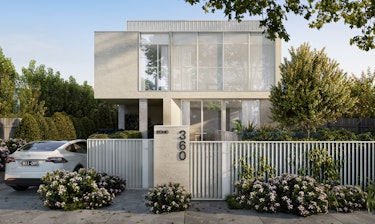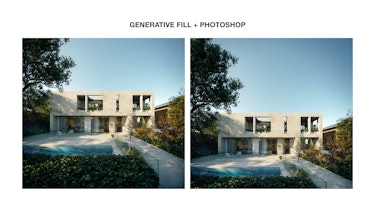In recent years, the field of architectural visualization has undergone a significant transformation due to the rapid advancement of artificial intelligence (AI) technologies. AI has brought forth a paradigm shift, revolutionizing the way architects, designers, and stakeholders perceive and communicate architectural concepts. This essay delves into the multifaceted influence of AI on architectural visualization, exploring its applications, benefits, challenges, and the potential future trajectory of this transformative synergy.
.jpg?ixlib=gatsbyFP&auto=compress%2Cformat&fit=max&q=75&w=375)
Evolution of Architectural Visualization
Architectural visualization has a rich history that has evolved alongside technological advancements. Traditional methods involved architects and designers sketching, drafting, and creating physical models to communicate their design concepts. These methods were time-consuming and limited in their ability to convey the intricacies of a design effectively.
The advent of computer-aided design (CAD) marked a significant leap forward, allowing architects to create digital representations of their designs. This enabled greater precision, accuracy, and ease of modification compared to traditional manual methods. However, the real transformation in architectural visualization came with the integration of AI technologies.

AI in Architectural Visualization: Applications
A. Generative Design: Generative design is one of the most impactful applications of AI in architectural visualization. By feeding AI algorithms with design criteria and constraints, architects can explore a vast array of design options that fulfill specific objectives. This process involves iterative refinement, with AI suggesting novel possibilities that may not have been considered otherwise. This synergy between human creativity and AI's ability to analyze massive datasets and generate diverse design solutions opens doors to groundbreaking architectural concepts.
B. Real-time Rendering: Rendering, the process of creating photorealistic images from 3D models, has traditionally been time-consuming due to the complex computations involved. AI-powered real-time rendering engines, however, have transformed this process. By leveraging machine learning techniques and graphics processing units (GPUs), these engines produce high-quality visualizations in real time. This real-time capability has revolutionized client presentations and design reviews, as architects can instantly visualize the impact of design changes.
C. Virtual Reality (VR) and Augmented Reality (AR): VR and AR technologies have gained prominence as AI-driven tools. VR enables architects to immerse themselves and stakeholders in virtual environments, providing an unparalleled sense of scale and spatial relationships. AR, on the other hand, overlays digital information onto the physical world, enabling architects to visualize design integrations in real-world contexts. These technologies enhance collaboration and communication between architects, clients, and other stakeholders.

Benefits of AI in Architectural Visualization
A. Enhanced Creativity and Exploration: The AI-powered generative design process fosters creative exploration by generating numerous design variations quickly. Architects can push the boundaries of their creativity and discover innovative solutions that align with project requirements. This collaborative approach between architects and AI encourages a synergy that leads to more imaginative and efficient designs.
B. Improved Communication: Architectural visualization plays a pivotal role in communicating design concepts to clients and stakeholders. AI-driven visualizations offer a more accurate representation of the architect's vision, bridging the gap between technical jargon and layperson understanding. This leads to more informed decision-making and a shared understanding of project goals.
C. Time and Cost Efficiency: AI-driven tools significantly reduce the time required to generate design iterations and visualizations. This efficiency translates into cost savings, as architects can explore multiple design options within shorter timeframes. Moreover, the ability to identify design flaws early in the process minimizes costly modifications during the construction phase.

Concept implemented by the CUUB team
Challenges and Considerations
А. Human-AI Collaboration: While AI technologies can automate various aspects of architectural design, the human touch remains essential. Architects must strike a balance between leveraging AI's capabilities and retaining their creative intuition. AI should complement human expertise rather than supplant it, promoting a harmonious collaboration between humans and machines.
В. Technical Expertise: The successful adoption of AI technologies requires architects to possess a certain level of technical proficiency. Understanding the algorithms, methodologies, and limitations of AI tools empowers architects to make informed decisions about their application in the design process. Continued education and upskilling will be essential as AI continues to evolve.

Concept implemented by the CUUB team
Future Outlook
The trajectory of AI's influence on architectural visualization is poised for remarkable growth. As AI algorithms become more advanced, they will better understand human preferences, design objectives, and aesthetic considerations. This will result in the generation of designs that resonate more closely with human sensibilities. Additionally, the integration of AI with other emerging technologies like 5G connectivity and the Internet of Things (IoT) could revolutionize collaboration by facilitating real-time interactions across geographical boundaries.

Concept implemented by the CUUB team
In conclusion, the synergy between AI and architectural visualization has brought about a transformative paradigm shift in the field of architecture. From generative design and real-time rendering to virtual and augmented reality experiences, AI technologies have redefined the way architects conceptualize, communicate, and realize their design visions. While challenges related to data security, human-AI collaboration, and technical expertise must be addressed, the potential for AI-driven architectural visualization to reshape the industry and drive design innovation is vast. Architects and stakeholders who embrace this evolving landscape stand to benefit from increased creativity, improved communication, and enhanced efficiency in the design process.
.jpg?ixlib=gatsbyFP&auto=compress%2Cformat&fit=max&q=75&w=375)